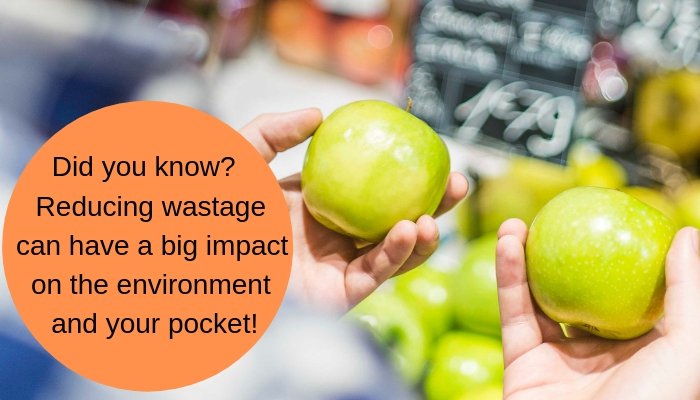9 ways to stop wasting food and start saving money
Did you know approximately one in every five bags of groceries bought in Australia gets tossed out, with $8 billion worth of edible food ending up in landfill every year?
- Sources say food wastage is leaving the average Aussie household out of pocket by anywhere from $1, 0362 to over $3, 5003 per annum.
- Out of the $8 billion worth of food Aussies waste every year, fresh food accounts for 33%, left overs 27%, packaged and long-life products 15%, drinks 9% and frozen food 9%4.
- Over a 12-month period, it is said Aussies will waste more than four million tonnes of food, which is enough to bridge the gap between Australia and New Zealand three times.5
- About 20-40% of fruit and vegetables are rejected before they reach grocery stores because they don’t match supermarket or consumer cosmetic standards.
- Reducing food wastage can have a big impact on the environment. This is because when food rots in landfill, it creates a gas that is 25 times more potent than the pollution that comes out of the average car exhaust.
How to reduce waste and pocket more cash?
1. Know what’s in your cupboard
By knowing what’s in your cupboard—fresh produce, canned food, ingredients—the less likely you are to return from the shops and realise you’ve already got one of those and two of them.
2. Abide by your shopping list
Writing a shopping list based on what’s at home and what you plan to cook during the week means you can avoid buying more than what you need and purchasing items you can go without.
3. Take note of the expiry date
Checking expiry dates when you’re shopping and positioning older items at the front of the fridge or cupboard, so they get eaten first, is a good place to start. If fruit and vegetables start to go a bit soft, also look at ways to incorporate them into soups, sauces and desserts.
4. Exercise portion control
If your meal plan for one looks more like something for a family of five, you might end up throwing quite a lot of uneaten food away. Try to buy and cook only what you need, and if you are making extra that it’s something that can be frozen or put away for a later date.
5. Store food properly
Airtight containers, snap-lock bags, fridges and freezers all play a part in prolonging the shelf life of certain foods. So, if you’ve got meat in the fridge that you’re not going to eat this week, put it in the freezer for when you do.
6. Eat the leftovers
If you’re making more food than what you can consume, rather than throw it out, pack it for lunch or save it for dinner the following night. The bonus is you won’t cook twice.
7. Say yes to a doggy bag
If you find yourself unable to finish your next restaurant meal, ask to take it with you so you can cook it up the following day. If you can stretch one meal into two – you reduce waste and the second’s free.
8. Turn scraps into compost
Compost bins and worm farms allow you to break down food scraps and at the same time create natural fertiliser for plantation you might have around the home.
9. Grow your own garden
Cost savings is one of the greatest drivers for Aussie households to grow their own food. Having your own stash of herbs and vegetables means you always have access to fresh ingredients and just the right amount.
Source: AMP News and Insights, 19 December 2018

